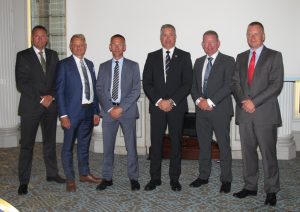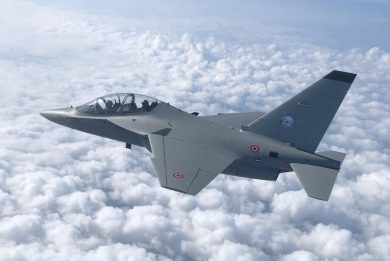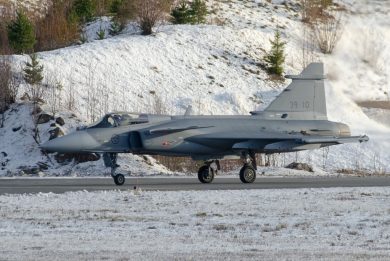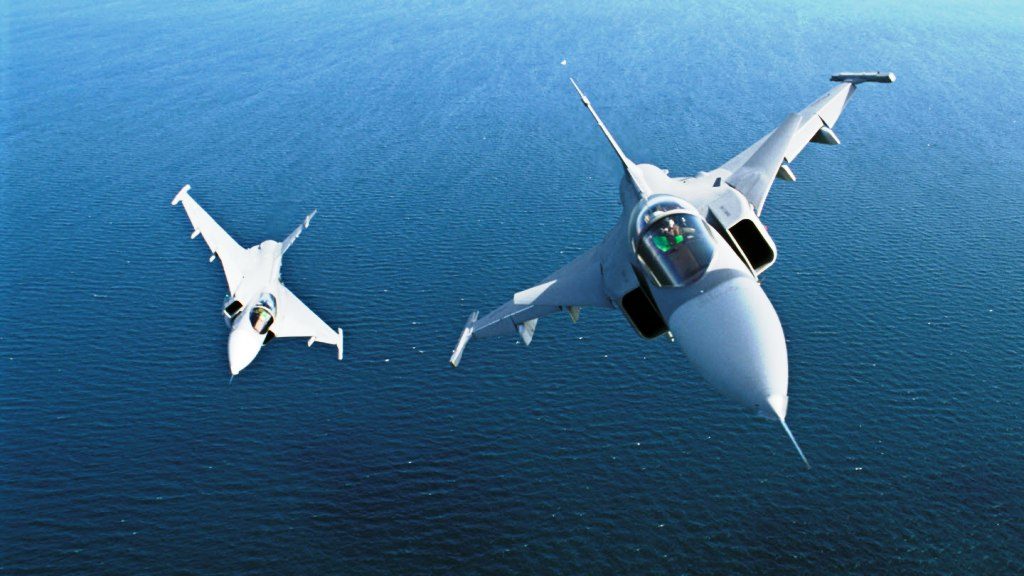
The Swedish Air Force looks to the future
A yearly tradition on the Sunday that precedes the two major air shows, Le Bourget and Farnborough, the meeting organised by the Swedish Air Force Fan Club saw Maj.Gen. Mats Helgesson, the Swedish Air Force Chief of Staff, giving a briefing on the service reorganisation, together with his wing commanders.
The changing are dictated by an increased perception of threat coming from the east, Russia having shown in recent years not only its military strength but also its willingness to use it.
On 1 January 2019 the Air Staff will move to Uppsala; this move is part of a decision to move all staffs out of Stockholm, in locations where they can be hosted in protected sites, with adequate command and control assets. Uppsala will also host the Air Component Command.
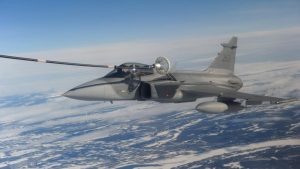
At wing level, in the last few years the posture has changed, coming back in a certain way to that of the Cold War era. In the “Basing 2020/2035” concept, each wing is responsible not only of its main operating base, but also a side air base and auxiliary air bases, a total of five to six being added to the main base, as well as some sections of motorway. To support current aircraft road segments need to be 15-20 meters wide, take-off requiring 1 km length while for landing 600-800 meters are sufficient. The number of such alternative bases is much lesser than that during the Cold War, but nevertheless they provide a good dispersal capability to the wings, allowing to confuse the enemy. To do so the service is retraining support personnel to operate in alternate sites, in all kind of weather including winter. Three groups of bases have been created, one in the north, one in the centre and one in the south, respectively under the responsibility of the F21 Norrbotten Wing, the F7 Skaraborg Wing, and the F17 Blekinge Wing.
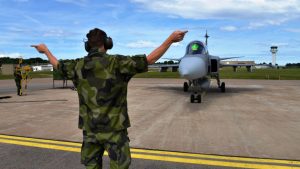
Looking at the future, Sweden is working on a document known as Defence Outlook 2035. The report should establish which are the defence missions, and the link between missions and available budget. Currently the Armed Forces are awaiting the outcome of the September elections in order to understand what the future will look like. In his briefing Gen. Helgesson showed the capability levels that might be attained, depending on funding. Should the military budget of Sweden remain constant, in 2020 the capabilities will decrease; to maintain current capabilities a slight spending increase is required, that will however not allow meeting the military strategic objectives. Only part of those will be reachable with a higher increase in investments, while to fully meet these objectives the budget has to be doubled. In terms of equipment the Air Force would need the acquisition of 60 additional Gripen E, to fulfil the needs of eight fighter wings, the replacement of strategic transport aircraft as well as of the airborne early warning component, and the acquisition of HALE and MALE UAVs, that would form a specific wing.
Another key element is personnel; should the new government be willing to meet the strategic objectives, personnel should more than double compared to current levels, 118,600 people, 7,500 of them civilian, being required, compared to the current 55,700, of whom 5,300 civilian. Conscripts called to serve should increase from the current 8,000 to 10,000 in 2025 and to 15,000 in 2035. And the last message given the Swedish Air Force Chief of Staff was exactly in line with this, as the manning, the recruiting and the retention capabilities must be the focus of the service in the coming years.
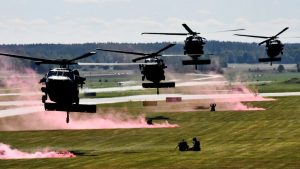
It was then the turn of the commanders of the various wings to take the floor. The full report on their briefings would take too much room. The key messages were the high importance of the presence of NATO aircraft in the Baltic States, which allows combined training, the fact those violations of the Swedish air sovereignty, remains nearly constant, and is mostly due to state aircraft that do not have the clearance; as for Russian activity, this even showed a reduction since Russia engaged in Syria. Coming to training exercises, the Arctic Challenge Exercise series, carried out alongside with the Finnish and the Norwegian Air Forces, was initiated in 2013, and has seen a continuous growth in participation, also due to the unrestricted training areas available in northern Sweden. Eight nations plus NATO have confirmed the participation in ACE 19, which will fall under Swedish responsibility, nine more nations being expected to answer soon. The exercise will see its LIVEX phase in late May, early June 2019, planning having started 18 months earlier. As for the Helicopter Wing, the bigger one in terms of manpower, its support capabilities to Special Forces have been boosted by the arrival of the Blackhawks. The unit is currently operating 18 NH-90s, evenly split between the land model and the naval one. A first OPEVAL of the latter version was successful, the Initial Operational Capability being forecasted for 2019, while the FOC will much depend on economy, the current FOC date for the helicopter equipped with the new Torpedo 47 being 2021.
The meeting, held at the RAF Club in London prior the opening of the Farnborough International Airshow, was organised by the Swedish Air Force Fan Club, chaired by Maj. Mats Gyllander, who gave the opportunity to a considerable number of journalists to get the latest information about the service.
